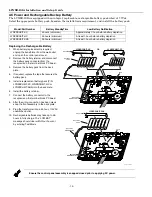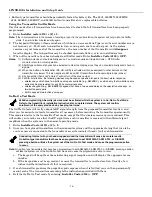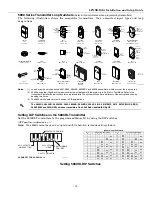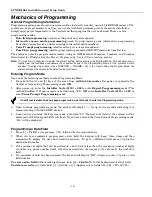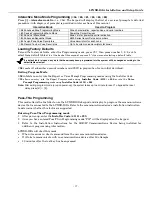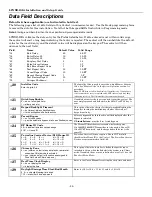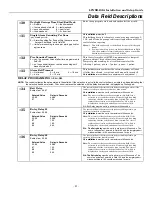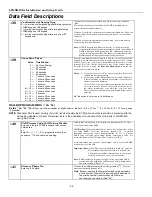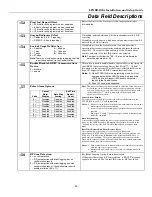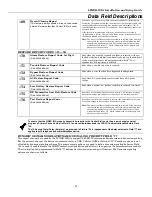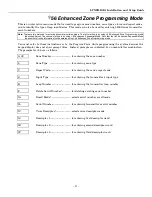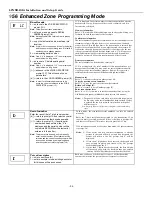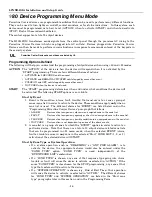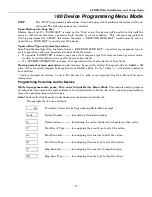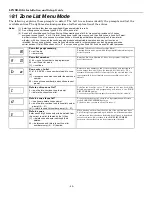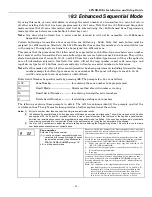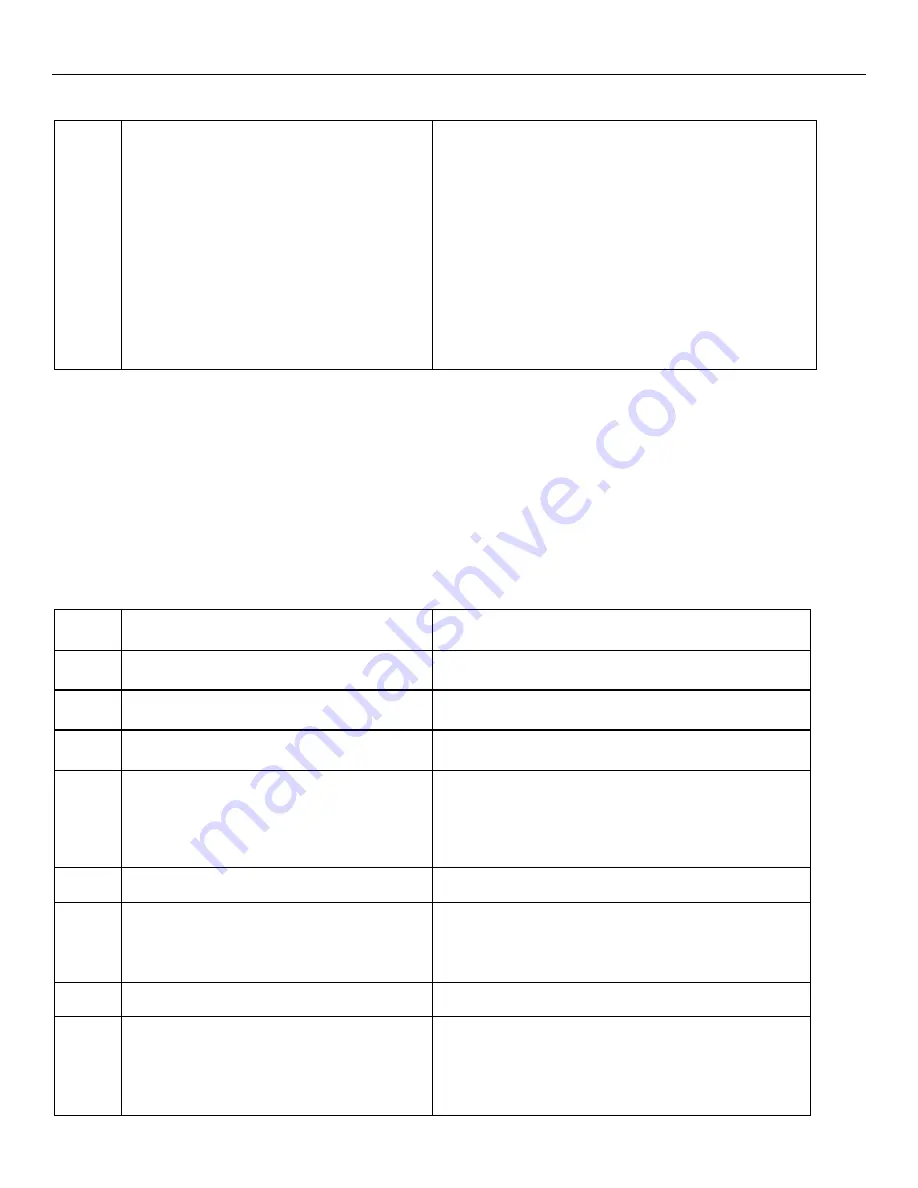
LYNXR-ISIA Installation and Setup Guide
- 26 -
Data Field Descriptions
✻
59
Exit Error Report Code
(Always enabled, a report code can be entered if
reporting formats other than Contact ID
®
are used)
If the system is armed and an entry/exit or interior zone is still open after
the exit delay time has expired, an alarm will sound at the keypad and
external sounder (the keypad will also display “EA”) , and the entry delay
begins. If the system is disarmed before the end of the entry delay that
immediately follows, the alarm sounding will stop and no message will be
sent to the central station. The keypad will display “CA “(CANCELED
ALARM) if the cancel display option was enabled in field
✻
57.
If the system is not disarmed before the end of the entry delay mentioned
above, and an entry/exit or interior zone is still open, an “Exit Alarm”
message and a “Zone Alarm” message will be sent to the central station.
The keypad will display “EA (EXIT ALARM),” and the alarm sounding will
continue until the system is disarmed (or timeout occurs).
If Contact ID® format has been programmed, the message will contain the
zone number and error code 374 (Alarm–Exit Error).
Note:
The control validates the data entered in this field. If the selection is
not valid the control will emit a single long beep indicating that the
selection has been rejected. The control replaces the selection with
the default value “1”, which is displayed on the keypad, and
advances to the next field.
SYSTEM STATUS AND RESTORE REPORT CODES PROGRAMMING
(
✻
60-
✻
69,
✻
70-
✻
76,
✻
89)
Program Report Codes using the interactive
✻
56 Enhanced Zone Programming Mode, or enter codes in data fields
✻
60-
✻
69,
✻
70-
✻
76,
✻
89. Use the following guidelines when programming report codes. The actual report code digits entered depend upon
the particular installation, and should be in agreement with you and the central station office receiving the signals.
With a 3+1 or 4+1 Standard Format:
Enter a code in the first box: 1–9, A, B, C, D, E, or F. Enter "#+10" for A (reports a “0”
on some receivers), "#+11" for B, "#+12" for C, "#+13" for D, "#+14" for E, "#+15" for F. Entering "0" in the
first
box will disable a
report. Entering "0" in the second box results in automatic advance to the next field.
With an Expanded or 4+2 Format:
Enter codes in
both
boxes (1st and 2nd digits) for 1–9, or A–F, as described above.
Entering "0" in the first box disables a report. Entering "0" in the second box eliminates the expanded message for that report.
With ADEMCO Contact ID® Reporting:
Enter a digit in the first box to enable the zone to report. Use a different digit for
each zone until you have used up available digits. If the number of zones exceeds the number of available digits, begin with
digit 1 again. This is an "enabling" code only and is not the actual code sent to the central station office. Entries in the second
boxes will be ignored. For system status (non-alarm) codes, enter a “1” in the first box for all the system conditions you want to
send to the central station. A "0" in the first box disables the report.
✻
60
Trouble Report Code
(See notes above)
This will be sent if a zone goes into trouble.
✻
61
Bypass Report Code
(See notes above)
This will be sent when a zone is manually bypassed.
✻
62
AC Loss Report Code
(See notes above)
Timing of this report is random with up to a 4-hour delay. If AC
restores before the report goes out, there is no AC restore report.
✻
63
Low Battery Report Code
(See notes above)
This will be sent when a low battery condition exists in the
system’s standby battery.
✻
64
Test Report Code
(See notes above)
This is sent periodically to test that the communicator and phone lines are
operational (frequency of report is selected in field
✻
51).
Note:
The control validates the data entered in this field. If the selection
is not valid the control will emit a single long beep indicating that
the selection has been rejected. The control replaces the selection
with the default value “10”, which is displayed on the keypad, and
advances to the next field.
✻
65
Open Report Code
(See notes above)
This is sent upon disarming of the system. 2nd digit = user
number, if expanded or 4+2 reporting is selected.
✻
66
Arm AWAY/STAY Report Code
(See notes above)
This option allows for independent programming of AWAY and
STAY reports. 2nd digit of report is user number if expanded or
4+2 reporting is selected.
NOTE: OPEN reports are not sent if the associated closing
report is not enabled.
✻
67
RF transmitter Low Batt. Report Code
(See notes above)
This is sent in the event that a wireless transmitter low battery
condition exists.
✻
68
Cancel Report Code
(Always enabled, a report code can be entered if
reporting formats other than Contact ID
®
are used)
This is sent upon disarming of the system after an alarm condition was
reported.
Note:
The control validates the data entered in this field. If the selection
is not valid the control will emit a single long beep indicating that
the selection has been rejected. The control replaces the selection
with the default value “10”, which is displayed on the keypad, and
advances to the next field.

